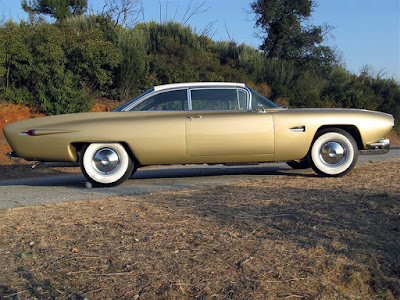UNique ONES Indeed, so far we know that most of the world's exotic car works are produced by automotive companies from Europe (especially the western European region) and North America. Yes, that's the thing we cannot be denied, but that doesn't mean that companies from other regions can't produce masterpiece exotic cars such those.
 |
| 2015 Bilenken Vintage Coupé built based on a modern BMW platform and debuted at the 2015 Dubai Motor Show. (Picture from: Russian Ambience) |
That's we can be seen on the exotic car made by the Bilenkin Classic Car, a Russian automotive company. Turn out, the company can produce an exotic car model equivalent to those made by automotive companies from western Europe and America. Let's take a look, those exotic car works named Bilenkin Vintage Coupé made by them could be said cool and stand out.
 |
| 2015 Bilenken Vintage Coupé describes the car as a “charming, old-fashioned, yet easy-to-use” vehicle by combining a classic design style but with a brand new engine performances. (Picture from: Russian Ambience) |
The Bilenkin Classic Car describes the car as a “charming,
old-fashioned, yet easy-to-use” vehicle by combining a classic design
style but with a brand new engine performances. The car carries the
retro granturismo model is also said to have combined the most advanced
features in terms of safety and comfort that were adopted from the BMW 3
Series.
The car was built by the Russian company based on a modern BMW platform that is made in such a way as to appear in a luxurious, elegance retro style. It can be seen from the lines and curves of the exterior which said are inspired by the Volvo P1800 nor the Volga M21, while the interior is thick influenced by the BMW's rear-drive E92 platform.
 |
| 2015 Bilenken Vintage Coupé's interior puts forward a retro theme but also has a modern premium class, which provides an almost similar atmosphere to the Rolls-Royce's hand made interior styles. (Picture from: Russian Ambience) |
The interior puts forward a retro theme but also has a modern premium class, which provides an almost similar atmosphere to the Rolls-Royce's hand made interior styles. There are the carvings that run along the dashboard and doortrim using wood material, it looks so perfect like the interior of a super luxury vehicle with a special personalization touches.
Furthermore inside the cabin, as You could be seen a nice cross-breeding in between the classic and modern styles by the existances of the Volvo P1900's classic styled instruments cluster coupled with the modern infotainment features. Unmitigated, the Bilenkin Vintage uses a high-end audio system, even embedding the BMW iDrive features on its center console.
 |
| Yoe even could be seen a nice cross-breeding in between the classic and modern styles by the existances of the Volvo P1900's classic styled instruments cluster coupled with the modern infotainment features on the 2015 Bilenken Vintage Coupé cabin. (Picture from: TopSpeed) |
"You will be surprised by the looks and strong, clear sound of the high-end audio we rigorously selected for the Vintage. This car offers a brilliant combination of modern safety and comfort standards, along with the style and quality of iconic old creations," said the Russian company in its press release to media.
Then for its drivetrain, the Russian company pinned a V8 4.0-liter Twinpower Turbo engine was the same as used by the 2007 BMW M3, coupled with the 7-speed automatic transmission system. So it's claimed to be able to produce up to 418 hp and 400 Nm of torque to move its rear wheels and make the car run up to top speed of 249 kph.
 |
| 2015 Bilenken Vintage Coupé offers a brilliant combination of modern safety and comfort standards, along with the style and quality of iconic old creations. (Picture from: Autoevolution) |
As the results of the retro styled car then became one of major topics amongst the world's car enthusiasts when the car debuted at the 2015 Dubai Auto Show. By looking at all those about the car above, we think it deserves to be aligned with the Roll-Royce in terms of luxury and comfort.
Although inspired by two iconic cars, you will not find a BMW nor Volvo emblems on the car made by the Russian company. Because this Russian manufacturer has a high level of pride and self-confidence to pin the Bilenkin Classic Cars brand emblem in the middle of its Vintage grilles.😉
As quoted from Wikipedia, the Bilenkin Vintage has sold more than two dozen units and each sold at the price ranging of €142,000. Until now, the car is still the center of attention of the world's automotive fans. A number of media have repeatedly made reported the Bilenkin Vintage since it was first appeared in 2015 and always received a positive response. *** [EKA | FROM VARIOUS SOURCES | BILENKIN VINTAGE | TOPSPEED | THE DRIVE | WIKIPEDIA | AUTOEVOLUTION | RUSSIAN AMBIENCE ]
Note: This blog can be accessed via your smart phone.

































